Note: This text was created with the help of AI.
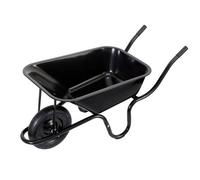

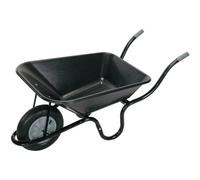

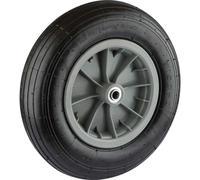
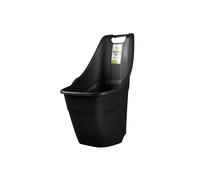

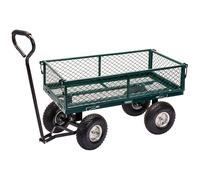
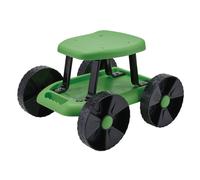


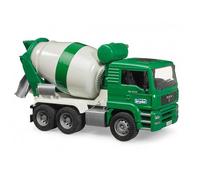
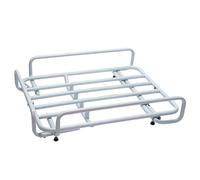

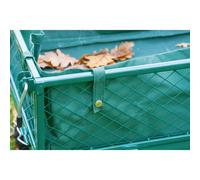

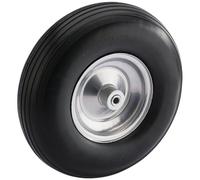

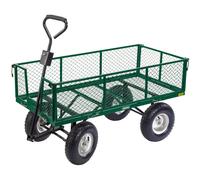
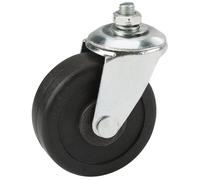








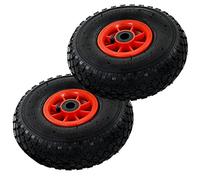


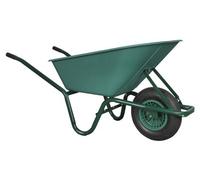
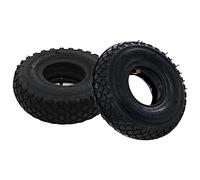







- 1
- 2
- 3
- 4
- 5
- next page
Wheelbarrows: Exciting Offers for Every Need
A wheelbarrow can help you to transport your fertilizer or compost, plant pots, bring your organic waste to the composter... An average wheelbarrow usually offers a load capacity of 50 to 100 kilograms and a load volume of 80, 85, 90, 100 or 120 litres. However, these values vary depending on the size of the tub and the type of wheelbarrow.
Depending on the material you should consider the density of the bulk material, because this determines the weight. 80 litres of wet topsoil are significantly heavier than 80 litres of aerated concrete blocks. The maximum load that the wheelbarrow can withstand must be taken into account. Normally, however, the load capacity of the product is higher than the load you can move at all.
A standard wheelbarrow is about 67 centimetres wide, so you can usually get it through a standard door.
The width varies depending on the capacity and type of wheelbarrow. With some products, the trough is narrower but deeper, so that you can fit through almost any door.
Yes, there are motor-driven wheelbarrows that you can use especially for transporting very heavy loads.
This version of the wheelbarrow saves time and energy when pushing and is particularly suitable for working on uneven terrain with slopes.
There is a wide range of children's wheelbarrows in different designs and sizes for different age groups.
For younger children, small, colourful models with a low handle and loading height are best, as they can then easily load and unload the wheelbarrow and push it around the garden without any problems.
For slightly older children, larger children's wheelbarrows that are sturdy and heavy duty are ideal. With these models, they can carry a decent amount of bulk material. You can usually recognise such wheelbarrows by their pneumatic tyres and sturdy material.
Wheelbarrows: Exciting Offers for Every Need
Are you ready to explore the fantastic variety of wheelbarrows available on pricehunter.co.uk? Whether you're a gardener, builder, or DIY enthusiast, you'll find an impressive range of options tailored to your specific needs, all sorted by the best prices from trusted retailers. Let’s dive into the essential aspects of choosing the perfect wheelbarrow for your projects.Types of Wheelbarrows
When it comes to wheelbarrows, understanding the different types available can help you choose the one that best meets your needs. Here are some popular categories:- Wheelbarrows for sale - A general category that includes all types of wheelbarrows.
- Traditional: Typically has one wheel at the front and two supports at the back, perfect for maneuverability.
- Two-Wheel: Provides extra stability and is easier to balance, making it ideal for heavy loads.
- Electric: Equipped with motorized wheels, these models reduce the effort required for transporting heavy materials.
- Garden: Designed specifically for gardening tasks, often featuring a lightweight frame and a larger bed.
Popular Brands
Choosing a trusted brand can make a significant difference in terms of durability and reliability. Here are some renowned brands that offer high-quality wheelbarrows:- Makita wheelbarrow - Known for their robust construction and innovative designs.
- Husqvarna: A brand synonymous with outdoor power products, offering exceptional performance.
- Fiskars: Offers lightweight and ergonomic designs, making them user-friendly.
- Jackson: Famous for their heavy-duty steel wheelbarrows suitable for commercial use.
- Bulldog: Focuses on traditional craftsmanship with sturdy materials for long-lasting use.
Features to Consider
When selecting a wheelbarrow, specific features can enhance usability and comfort. Here are some crucial aspects to consider:- Best garden wheelbarrow - Combining functionality and style for gardening tasks.
- Weight Capacity: Ensure the wheelbarrow can handle the loads you typically transport.
- Material: Steel offers durability, while plastic or fiberglass provides a lightweight option.
- Wheel Type: Pneumatic wheels offer better traction, while solid wheels are puncture-resistant.
- Handle Design: Look for ergonomic handles that reduce strain during use.
Accessories and Enhancements
Enhancing your wheelbarrow with accessories can improve functionality and comfort. Here are some popular options to consider:- Large wheelbarrows for sale - Providing ample space for transporting larger items.
- Mesh Covers: Protects your load from the elements while ensuring visibility.
- Tool Holders: Useful for keeping your gardening tools organized and accessible.
- Wheelbarrow Liners: Helps protect the interior from damage and makes cleaning easier.
- Stands: Allow for easy loading and unloading without tipping over.
Usage Scenarios
Understanding how you plan to use your wheelbarrow can significantly influence your choice. Here are some common scenarios:- Price of a wheelbarrow - Explore options that fit your budget for various uses.
- Gardening: Perfect for transporting soil, plants, and other gardening supplies.
- Landscaping: Essential for moving rocks, mulch, and equipment around large outdoor spaces.
- Construction: Ideal for hauling bricks, concrete, and other heavy materials.
- DIY Projects: Great for interior home improvement tasks, such as moving materials or debris.
Note: This text was created with the help of AI.